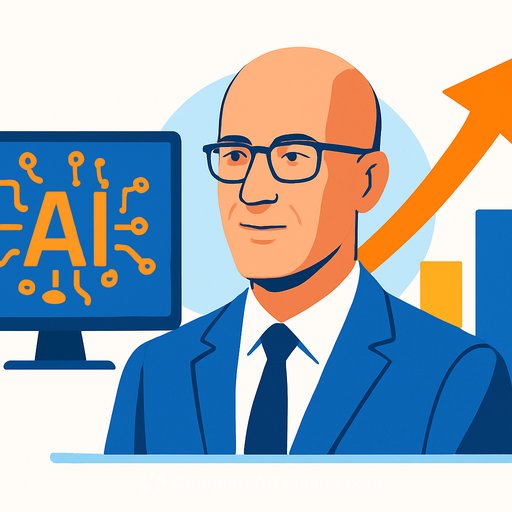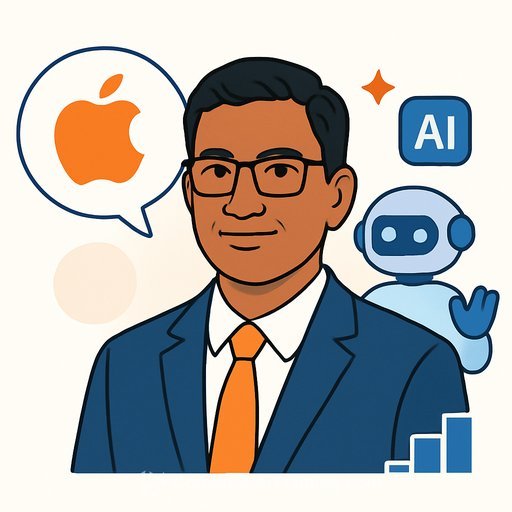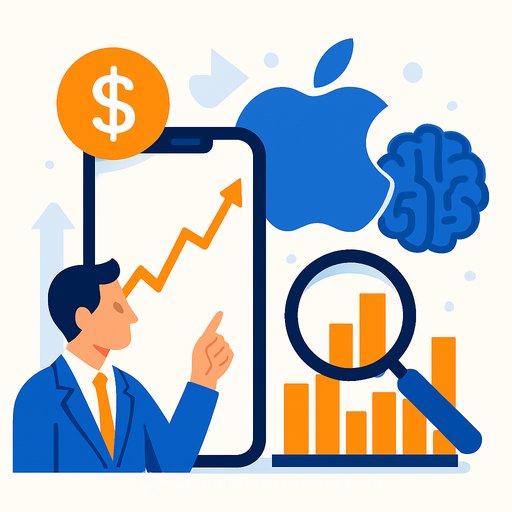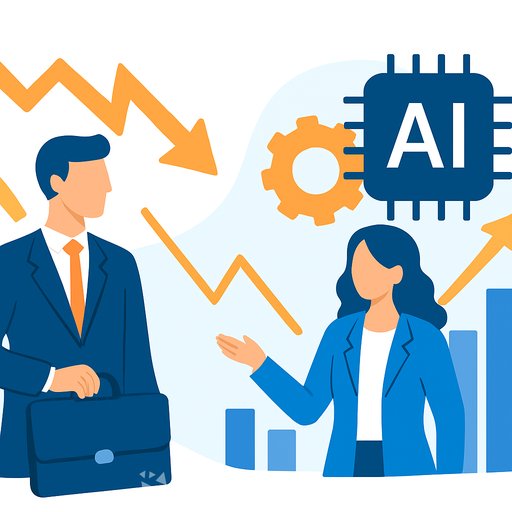Why Nokia's CEO Thinks AI Is Echoing the 1990s Internet Boom
Nokia's chief, Justin Hotrad, believes AI is pushing a long upcycle-similar to the internet's breakout in the 90s. He's leaning into that thesis with a clear bet: data center infrastructure will be the growth engine, and Nokia wants to be in the core of it.
His message to investors and operators is simple: the demand is real, it's broad, and it's still early. As he told Reuters, "I fundamentally think we're at the front end of an AI supercycle, much like the 1990s with the internet."
The signal: data center demand is setting the pace
AI is no longer a side project. Companies are building capacity-fast-to train and serve models at scale. Hotrad, who previously led Intel's data centers and AI group before joining Nokia in April, said the company is seeing "growth across the board" from hyperscalers to smaller players. His read: "Clearly, the incremental growth investment is driven by data centres. It's a huge step up in volume."
That demand is showing up in the numbers. Nokia's latest quarter beat expectations, helped by stronger optical and cloud technologies-especially tied to AI-focused data centers following its acquisition of US optical networking firm Infinera. Operating profit hit €435m (about US$504m), with momentum across network infrastructure, optical, and mobile.
Importantly, AI and cloud customers now account for 6% of quarterly sales-a small but meaningful base that Nokia expects to compound as model training and inference continue to scale.
Strategy shift: from phones to AI-first networks
Since exiting mobile phones in 2013, Nokia has been reorienting around networks where AI can improve throughput, efficiency, and reliability. The company is embedding AI deeper into radio access and fiber systems-where performance gains translate to both customer wins and better margins.
To accelerate, Nokia created a Technology and AI organization in September, led by CTO Pallavi Mahajan, a former Intel executive. The mandate: push AI-driven innovation across the network stack and build products that meet the needs of AI-heavy data center traffic.
The debate: supercycle or bubble?
The market is split. At Salesforce's Dreamforce event on 17 October, Google CEO Sundar Pichai said big tech will keep competing and shipping AI advances, comparing the current moment to the social media breakout after YouTube and Facebook. That perspective supports Hotrad's view: sustained innovation cycles create durable demand for infrastructure.
Others are more cautious. A Bank of America survey shows more than half of fund managers think AI stocks are in a bubble. OpenAI's Sam Altman has also said investors may be "overexcited" at this stage. Alibaba Co-founder Joe Tsai warned about data centers getting built "on spec."
Hotrad's stance is steady: even if the market overheats and cools, the long-term trend line is favorable. Nokia is positioning for that horizon, not the quarter-to-quarter sentiment.
What this means for executive teams
- Model the demand chain: AI training and inference need low-latency, high-throughput networks. Expect ongoing spend in optical transport, backbones, and edge connectivity. If your product relies on AI, your infra partners matter as much as your model providers.
- Watch the cost curve: The unit economics of inference (tokens/second, cost per query) will pressure both software pricing and network design. Track where efficiency gains show up-optics, routing, caching, or model compression.
- De-risk overbuild: Bubble risk is real in certain regions and workloads. Tie capacity plans to committed demand, not headlines. Secure flexible contracts and optionality on build-outs.
- Prioritize interoperability: Multi-cloud and hybrid are becoming default. Favor vendors and standards that keep you portable across clouds and colos.
- Talent and tooling: Network AI isn't just models-it's telemetry, observability, and automated optimization. Invest in teams that can translate business goals into network policies and SLOs.
KPIs to keep on your dashboard
- AI-linked revenue as a share of total revenue
- Inference cost per request and latency percentiles by region
- Optical capacity growth and link utilization
- Lead times for GPUs, optics, and key switching components
- Data center energy cost per compute unit
Why Nokia's posture matters
Nokia's mix-optical networks, core infrastructure, and integrations with mobile-sits at the chokepoints of AI demand. If the AI cycle persists, vendors that improve throughput and reliability while lowering total cost of ownership will take share. Nokia is angling for that outcome with product focus, an AI-first tech org, and tighter alignment with data center needs.
If the market softens, companies with strong balance sheets and core infrastructure exposure tend to endure. That's the hedge embedded in Hotrad's "supercycle" thesis: build for the long arc, and be ready to absorb short-term shocks.
Executive checklist
- Stress-test your 24-36 month AI infra plan against three scenarios: steady growth, pause, and surge. Adjust capex triggers accordingly.
- Map AI workloads to network requirements. Don't let model roadmaps outpace your transport and edge plans.
- Negotiate for observability data and interoperability in all infra contracts. Vendor lock-in will tax you later.
- Stand up a cross-functional AI infra council (Engineering, Finance, Product, Ops) to align spend with measurable outcomes.
The bottom line: AI demand is real, infrastructure is the bottleneck, and execution beats opinion. Whether you agree with the supercycle view or not, your advantage will come from disciplined capacity planning, smart vendor choices, and relentless tracking of unit economics.
If you're building leadership capability for this shift, see a curated set of training paths by role at Complete AI Training.
Your membership also unlocks:






